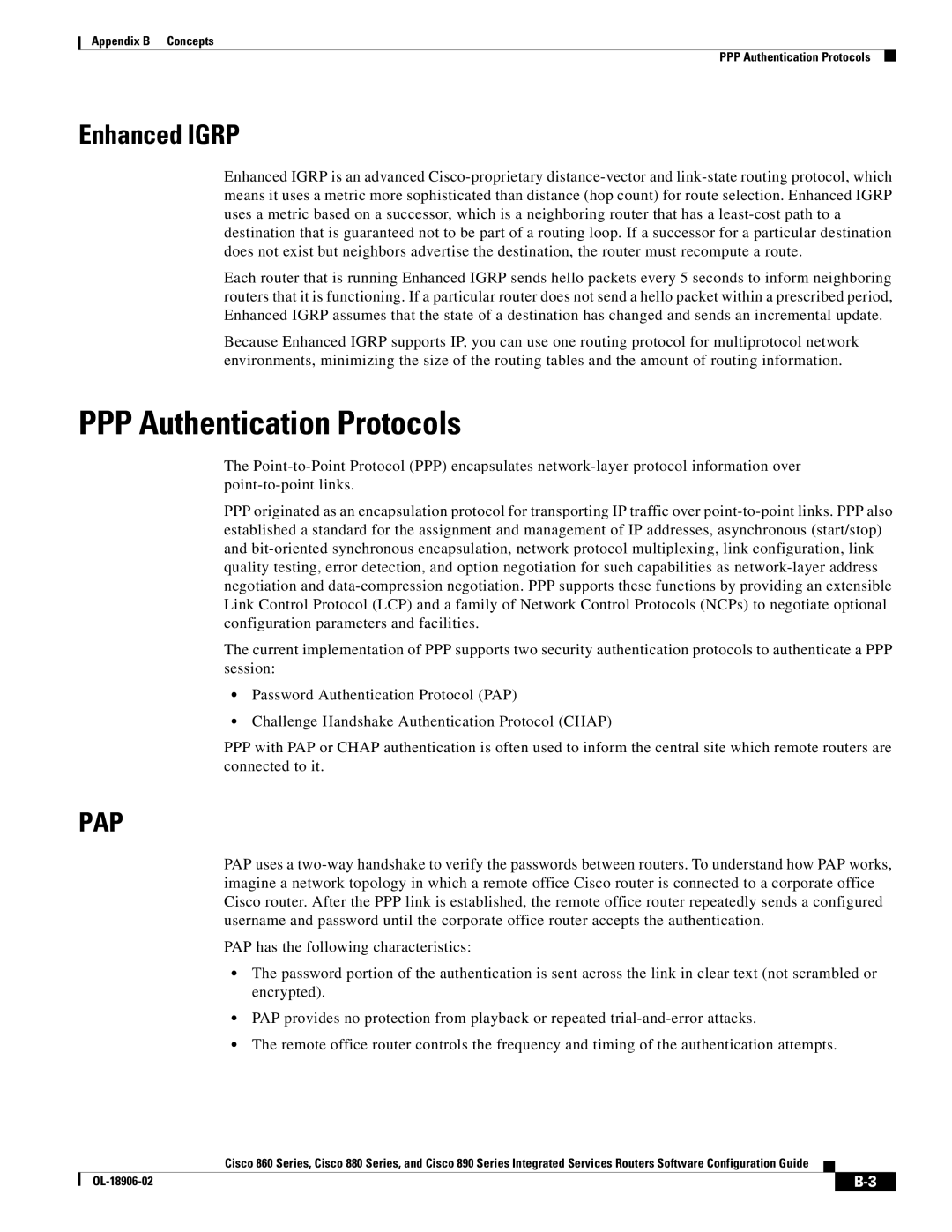
Appendix B Concepts
PPP Authentication Protocols
Enhanced IGRP
Enhanced IGRP is an advanced
Each router that is running Enhanced IGRP sends hello packets every 5 seconds to inform neighboring routers that it is functioning. If a particular router does not send a hello packet within a prescribed period, Enhanced IGRP assumes that the state of a destination has changed and sends an incremental update.
Because Enhanced IGRP supports IP, you can use one routing protocol for multiprotocol network environments, minimizing the size of the routing tables and the amount of routing information.
PPP Authentication Protocols
The
PPPoriginated as an encapsulation protocol for transporting IP traffic over
The current implementation of PPP supports two security authentication protocols to authenticate a PPP session:
•Password Authentication Protocol (PAP)
•Challenge Handshake Authentication Protocol (CHAP)
PPPwith PAP or CHAP authentication is often used to inform the central site which remote routers are connected to it.
PAP
PAP uses a
PAP has the following characteristics:
•The password portion of the authentication is sent across the link in clear text (not scrambled or encrypted).
•PAP provides no protection from playback or repeated
•The remote office router controls the frequency and timing of the authentication attempts.
Cisco 860 Series, Cisco 880 Series, and Cisco 890 Series Integrated Services Routers Software Configuration Guide
| ||
|
